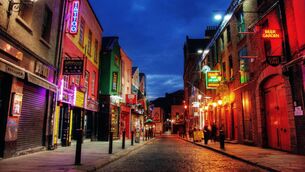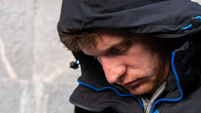Art ‘plays major role in patient recovery’
“I don’t mean the suffering of people who are obviously psychologically distressed, but people who may go in for relatively minor operations,” said London-based neurobiologist Professor Semir Zeki.
A keynote speaker at the three-day International Arts and Health Conference organised by the Arts Council, Prof Zeki is a driving force in the scientific study of the way art makes its effects on the brain.
“Why can art have such a powerful therapeutic effect? I think it is really because it allows people to externalise or to experience things which they are otherwise inhibited from doing,” he said.
“There is no doubt that for many people painting is an extraordinarily powerful therapeutic system,” Prof Zeki said. “I would think appreciating music would have a more powerful effect because it satisfies concepts.”
Prof Zeki of University College, London told the conference he paints for his own private pleasure.
“What I have found in my own paintings is that once I settle on a scene which I want to paint, I then let the brush and the colours guide me.
“Strange and interesting forms develop from that, which give me quite a lot of knowledge and pleasure. I would very much like one day to migrate to music,” said Prof Zeki.
Opening the conference in Dublin Castle, Arts Minister John O’Donoghue said it was accepted by the medical and caring professions that the arts contributed to health and well-being.
Organisations in the health services were increasingly seeking to include arts within their programmes. In 2000, there were 150 arts projects in the country’s health services. By 2004 it was estimated this number had at least doubled.
“The benefits of arts in healthcare are not only to be seen in hospitals and care environments themselves, but also in the development of the artistic practice of the artists themselves,” said Mr O’Donoghue.
“This conference will contribute to a greater understanding of the contribution arts can make to the health sector and how this can be encouraged further,” he said.
Arts Council chair Olive Braiden said artists working within hospitals and other health environments were telling them they were finding an important outlet for their work.
“The challenges of making art to high standards, in collaboration with many people and groups found within the hospital environments, pushes them to new levels of achievement,” she said.
Over the three days, 20 artists are creating “moments of interest” at various times and locations throughout the conference to show in practice how interactive artwork can shift expectations.












